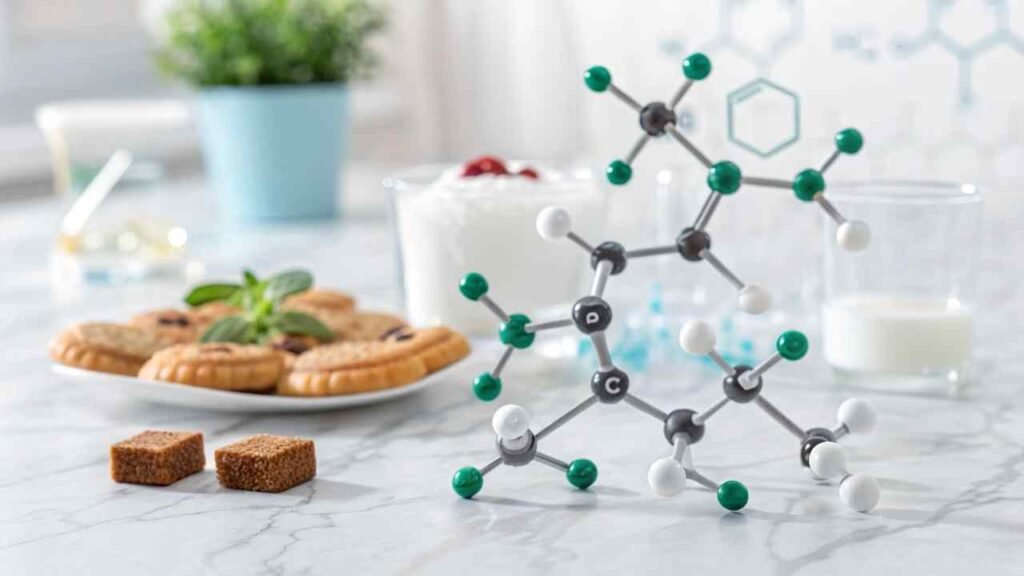Struggling to find a stable, intensely sweet, zero-calorie option for your products? Wondering what makes sucralose so adaptable? Let's explore its key chemical features.
Sucralose's versatility stems from its chlorinated sucrose structure. This gives intense sweetness and exceptional stability (heat/pH). Good solubility also helps in diverse food and drink applications.
At FINETECH, we supply sucralose and often discuss its technical benefits. Clients need to know why it performs well. Sucralose's unique chemistry makes it a top choice. Let's get to the specifics.
How Does Sucralose’s Molecular Structure Affect Its Sweetness?
Ever wondered why sucralose is hundreds of times sweeter than sugar? How does its unique shape trick our taste buds so effectively? Let's look at its molecular design.
Sucralose's intense sweetness (around 600 times sugar) comes from replacing three specific hydroxyl groups on a sucrose molecule with chlorine atoms. This greatly enhances its fit with sweet taste receptors.
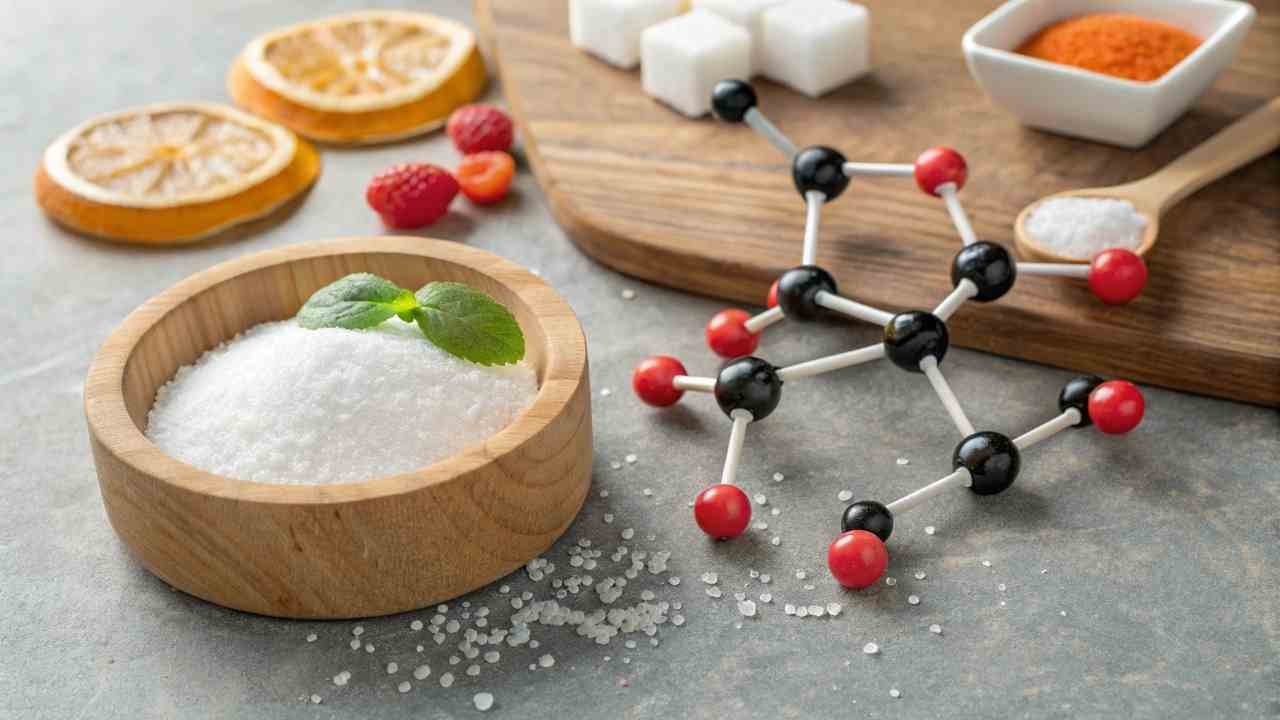
Sucralose is made by selectively changing three parts of a sugar (sucrose) molecule. Three hydroxyl (-OH) groups are replaced by three chlorine (Cl) atoms. This precise modification makes it bind much more effectively to our sweet taste receptors (T1R2/T1R3). The result is a sweetness intensity about 600 times that of sugar1.
This chlorination also means the body doesn't break it down for energy, so it has zero calories2. Tiny amounts are needed, making it cost-effective.
Sweetness Factor:
| Feature | Sucrose | Sucralose (Chlorinated Sucrose) | Impact |
|---|---|---|---|
| Base | Sugar | Modified Sugar | Targeted Change |
| Sweetness | 1x | ~600x | Highly Intensified |
| Metabolism | Yes (Calories) | No (Zero Calories) | Non-caloric |
Why Does Sucralose’s Solubility Matter in Liquid vs. Dry Mixes?
Using sucralose in drinks or powders? Does how it dissolves make a difference? Let's check its solubility.
Sucralose dissolves well in water (good for drinks). Its fine crystalline powder form helps it mix evenly into dry products like powdered mixes, ensuring consistent sweetness.
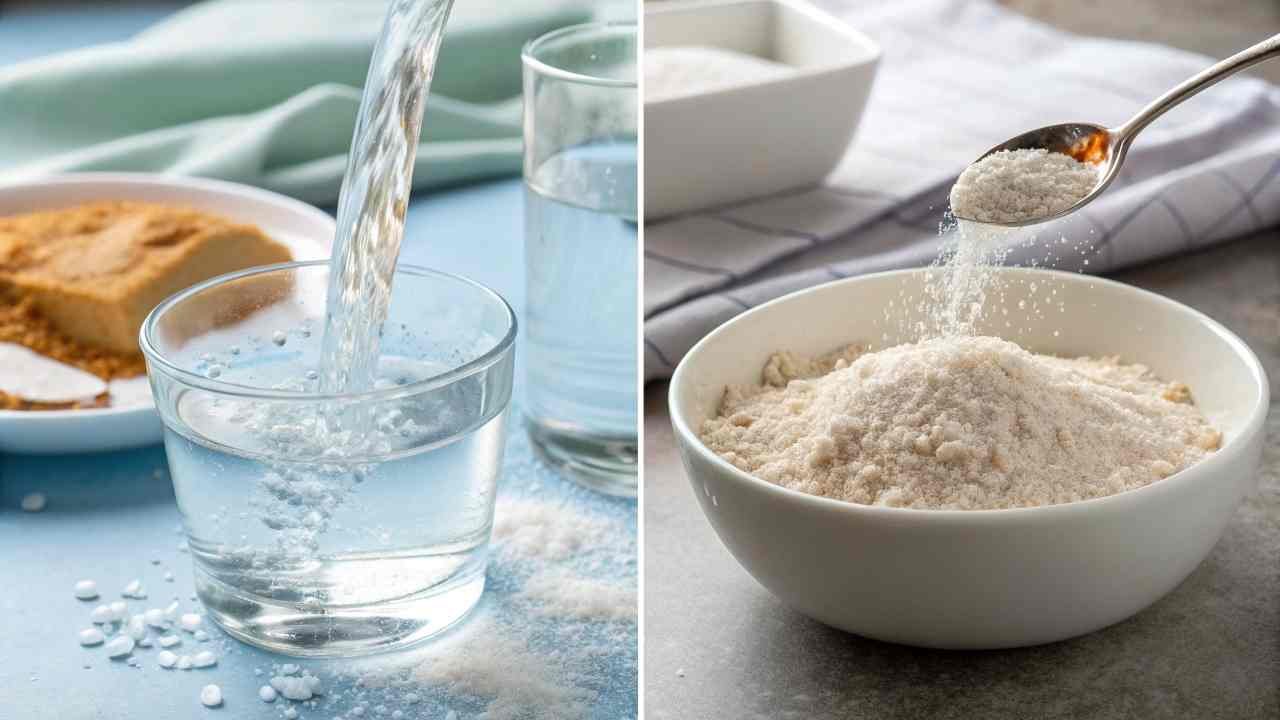
Sucralose's good water solubility (around 283 g/L at 20°C) is vital for liquid products like beverages. It dissolves easily and clearly, without cloudiness. Concentrated stock solutions can be made for easy dosing.
For dry mixes (powdered drinks, baking mixes), sucralose is a fine powder. Its particle size3 is important for even distribution since very little is used. If not mixed well, you get "hot spots" of sweetness. It must also dissolve quickly when the consumer adds water.
Solubility in Use:
| Application | Key Factor | Importance |
|---|---|---|
| Liquids | Good Water Solubility | Clear, uniform sweetness; easy to dose. |
| Dry Mixes | Fine Powder, Dispersible | Even blending for consistent sweetness. |
Does Sucralose React with Preservatives Like Sodium Benzoate?
Using preservatives with sucralose? Worried about bad reactions? Let's see if sucralose is compatible with common preservatives.
Sucralose is very stable and generally unreactive. It typically does not react with common food preservatives like sodium benzoate or potassium sorbate under normal food conditions.
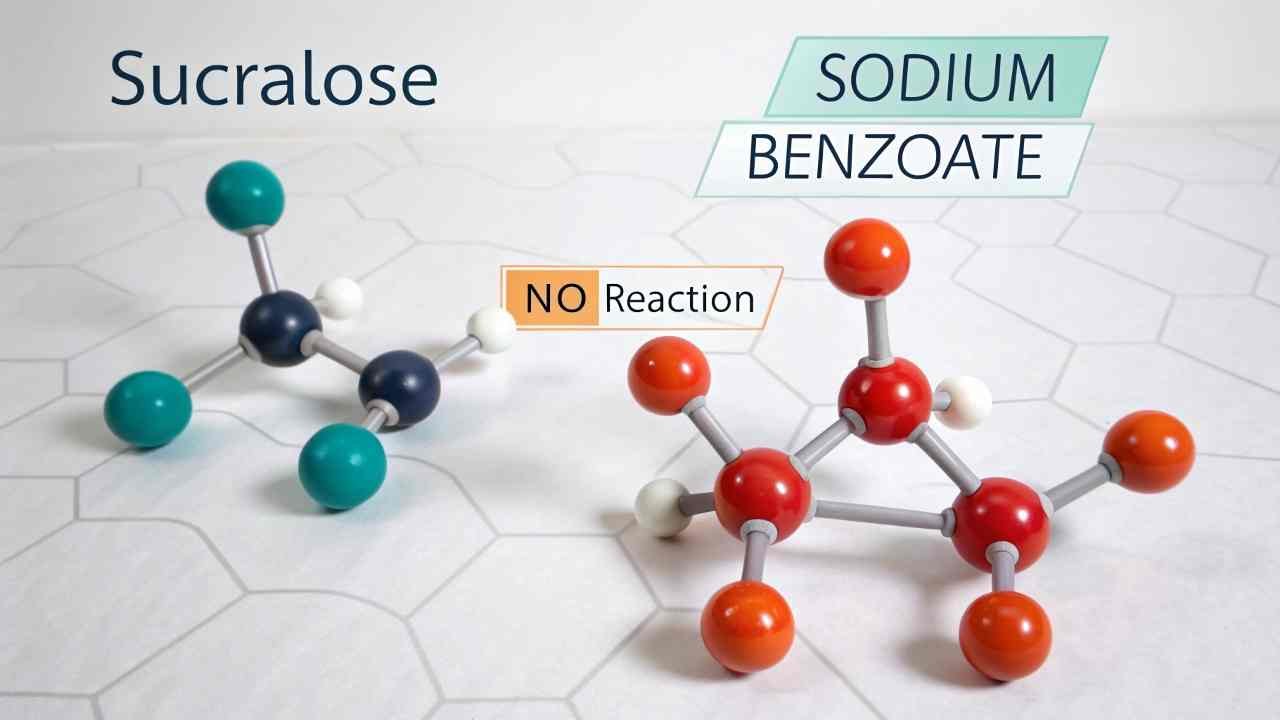
Sucralose is exceptionally stable due to its chlorinated structure. It resists breakdown from heat and across a wide pH range (pH 3-8). This makes it compatible with most food ingredients, including preservatives like sodium benzoate (used in acidic foods) and potassium sorbate.
There's no expected chemical reaction between sucralose and these common preservatives. They perform their separate jobs (sweetening and preserving) without interfering with each other. Always use good formulation practices4, but sucralose itself is rarely the reactive component.
Compatibility Check:
| Combination | Reaction Risk | Reason |
|---|---|---|
| Sucralose + Sodium Benzoate | Very Low | Both stable, sucralose unreactive. |
| Sucralose + Potassium Sorbate | Very Low | Both stable, sucralose unreactive. |
How Does Sucralose Particle Size Impact Mixing Efficiency?
Buying sucralose powder for dry products? Does granule size matter for good mixing? Let's look at particle size for blending.
Proper sucralose particle size is vital for even mixing in dry blends, as it's used in tiny amounts. Finer particles usually mix better but can be dusty or flow poorly if too fine.
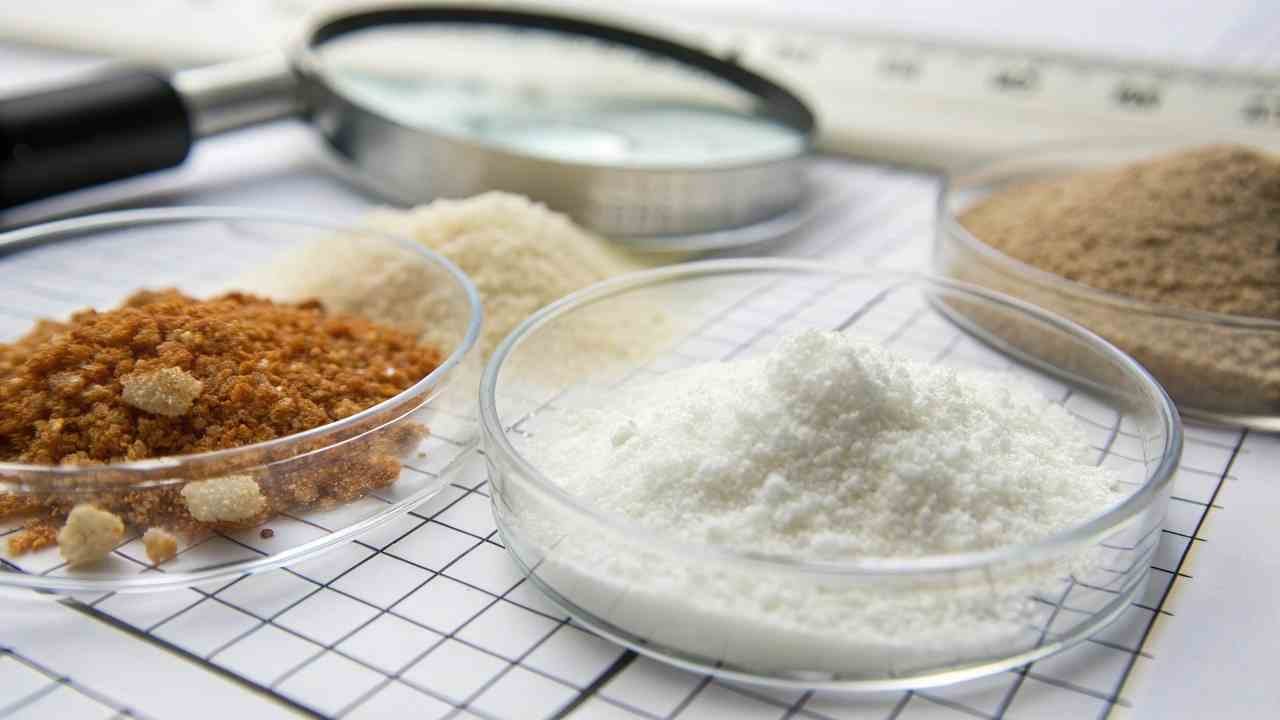
Sucralose is a micro-ingredient. A very small amount gives lots of sweetness. Getting it mixed evenly is crucial for consistent product quality. Particle size matching (ideally) the bulk ingredients helps prevent segregation (separation).
- Finer particles (e.g., 100-200 mesh) tend to disperse more evenly. However, very fine powders can be dusty and have poor flow.
- Coarser particles are less dusty and flow better but might not mix as uniformly if too different from other ingredients.
Techniques like pre-blending sucralose with a small amount of a major ingredient (geometric dilution) help achieve uniformity. FINETECH can source sucralose in various particle sizes to suit client blending needs.
Particle Size & Mixing:
| Particle Size | Dispersion | Dust/Flow Issues | Best For... |
|---|---|---|---|
| Finer | Better | Higher Risk | Maximum uniformity, with careful handling. |
| Coarser | Fair | Lower Risk | Easier handling, if blend allows. |
What Lab Tests Confirm Sucralose Purity and Authenticity?
Need to be sure your sucralose is pure and genuine? What lab tests verify this? Let's see how sucralose quality is checked.
Sucralose purity and identity are confirmed by High-Performance Liquid Chromatography (HPLC) for assay/impurities, Specific Optical Rotation, IR spectroscopy for identity, and tests for contaminants like heavy metals and moisture.
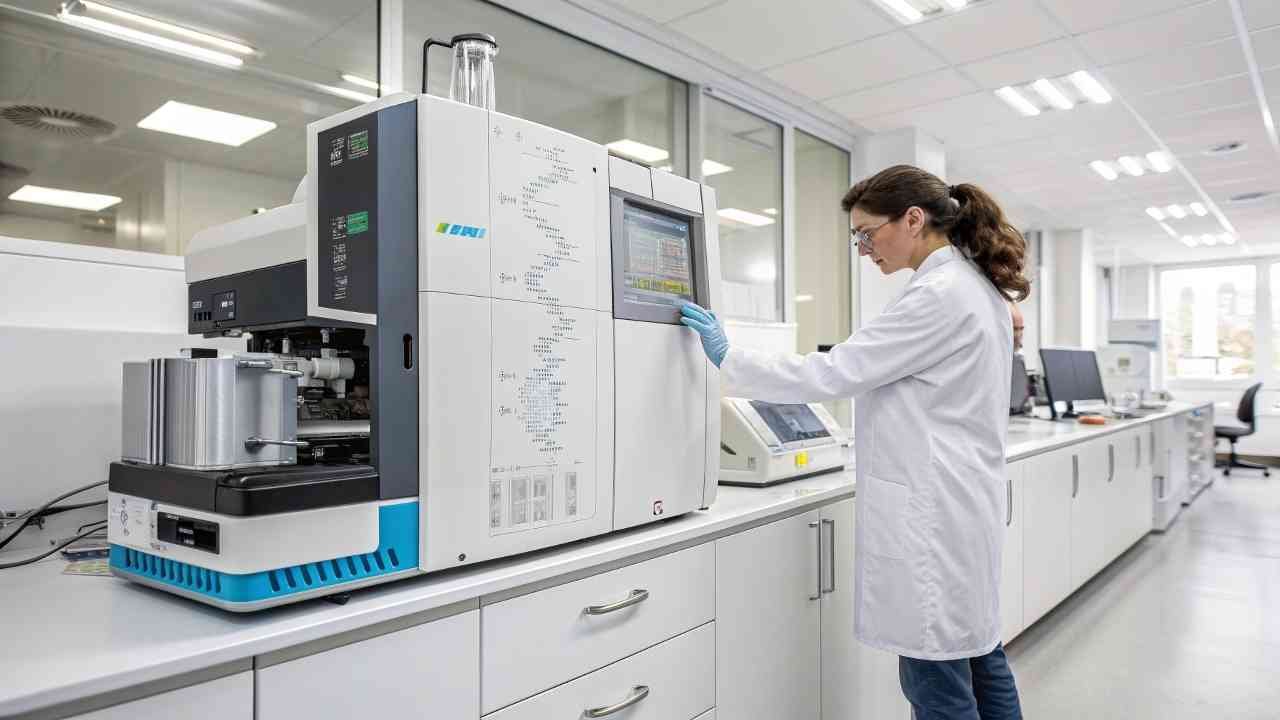
For any food additive, but especially for a high-value, high-potency ingredient like sucralose, ensuring purity and authenticity is paramount.
Key Tests:
- HPLC: Determines sucralose percentage (assay, e.g., >98-99%) and identifies/quantifies any related substances or impurities.
- Identification Tests:
- IR Spectroscopy5: Matches the sample's "molecular fingerprint" to a sucralose standard.
- Specific Optical Rotation: A characteristic physical property for sucralose.
- Purity Tests (Contaminants):
- Loss on Drying/Water: Checks moisture content.
- Ash: Measures inorganic impurities.
- Heavy Metals6: Ensures levels of lead, arsenic, etc., are very low (ppm range).
- Process Impurities: Limits for substances like methanol or TPPO.
Core Lab Checks:
| Test Type | Method(s) | Purpose |
|---|---|---|
| Assay/Purity | HPLC | Confirm % sucralose, check impurities |
| Identity | IR, Optical Rotation, HPLC Ret. Time | Verify it is sucralose |
| Contaminants | Various (e.g., for metals, moisture) | Ensure safety, check for unwanted substances |
Conclusion
Sucralose's chemical traits – chlorinated structure for intense sweetness and stability, good solubility, and general non-reactivity – make it highly versatile and effective in many food formulations.
-
Understanding the sweetness intensity of sucralose can help you make informed choices about sugar substitutes. ↩
-
Exploring this link will provide insights into the advantages of zero-calorie foods and their impact on health and diet. ↩
-
Learn about the significance of particle size in ensuring even distribution and optimal sweetness in dry mixes. ↩
-
Learning about formulation practices can improve product quality and safety in food production. ↩
-
Learn about the role of IR Spectroscopy in matching molecular fingerprints for accurate identification of sucralose. ↩
-
Discover the safety standards for heavy metals in sucralose to ensure product quality and consumer safety. ↩

